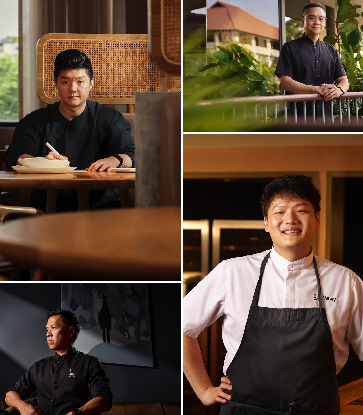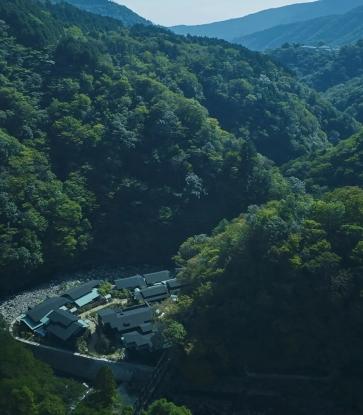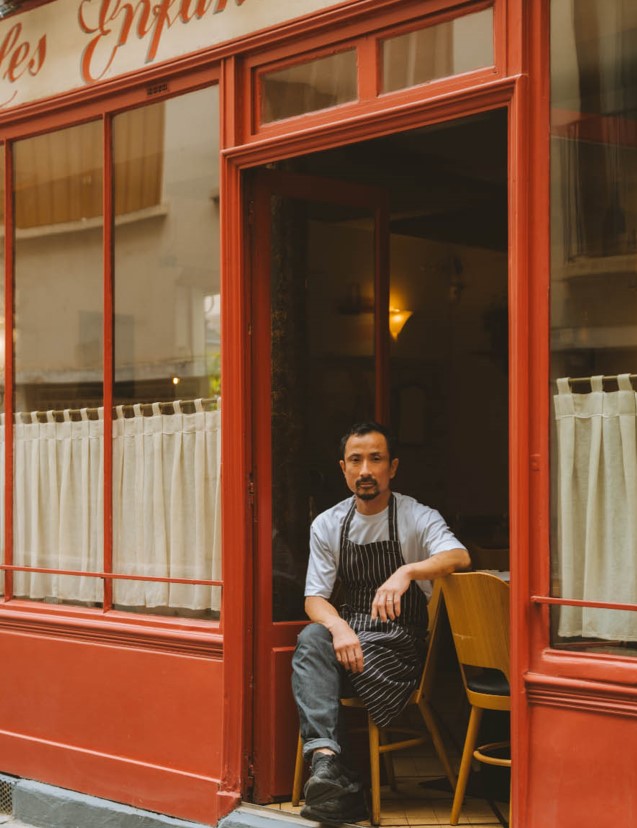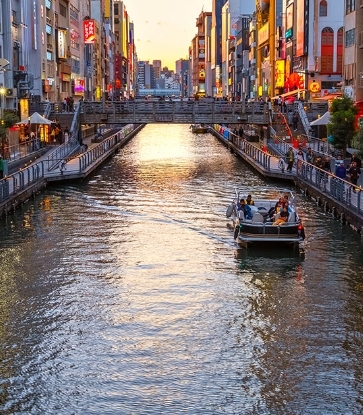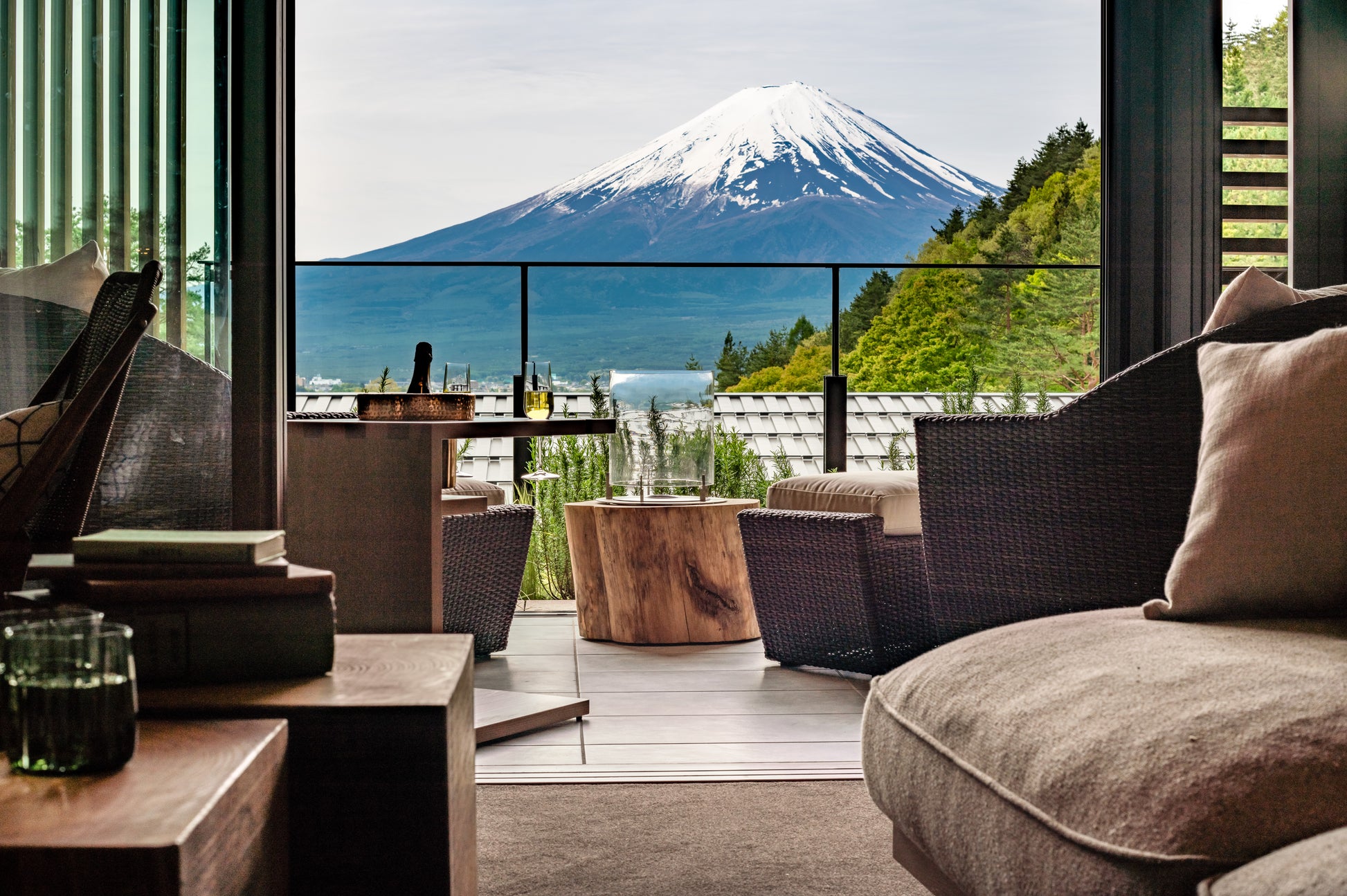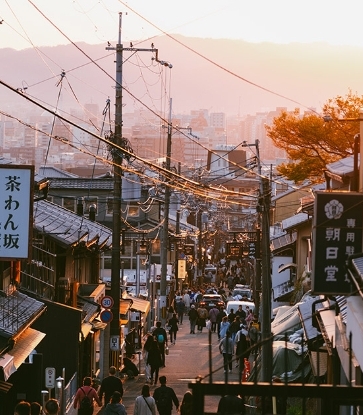For resident chef Kazuhiro Hamamoto of Ki-sho, the food that he serves in the restaurant is not just about quality produce, but that of memory.
“Live fish was something that I saw all the time as I was growing up,” he says.
The Kyoto native lived by the sea and recalls going out to sea at the tender age of three. “My father often went fishing and he often took me with him. I might have been about three years old and I have the memory of going fishing in a boat.”
Out at sea, father and son caught all sorts of fish, including tai (sea bream), ishidai (striped beak fish) and katsuo (skipjack tuna). Out of all these, katsuo left the deepest impression on the young Hamamoto. He remembers vividly how, after the fish was caught, the slaughter method of ikejime (of inserting a spike quickly into the fish, resulting in instant brain death) would be applied, which was accompanied by the strong smell of blood.
These experiences are etched not only in his memory but also his palate.
Honing His Skills
The alumni of Waku Ghin studied at the Kyoto Culinary Art College by Taiwa Gakuen Education Inc., the city’s only culinary school, and spent early years of his career honing his kaiseki skill in the former Imperial capital of Japan.
During this time, Hamamoto apprenticed in several kaiseki institutions including Kichisen, which gained three stars in the MICHELIN Guide in 2014, and grew under the mentorship of Masahiro Nakata, the principal of Taiwa Gakuen Education Inc. In his mid-twenties, Hamamoto moved to Tokyo and spent more than a year learning the art of sushi-making in Tsukiji market restaurants. His next move was to Singapore where he joined Tetsuya Wakuda’s opening team at Waku Ghin, now a two-Michelin-starred restaurant in Singapore.
In 2013, Hamamoto joined Ki-sho as its resident chef, where he serves modern kaiseki through a series of seasonally inspired omakase menus, each deeply rooted in Japan’s rich culinary tradition.
Freshness Is Of Paramount Importance

Fish is central to Japanese cuisine and so is the concept of freshness. Schooled in tradition and aided by his childhood fishing trips, Hamamoto spent much time thinking about how to cook fish for his guests.
He says: “Well, freshness is the most important thing. But now more than that, it’s the potential of the fish. Where was it caught? Who caught it? How did it arrive? I consider that first. Which day will it be the most delicious? The second day? The third day? Or maybe a week after? How far can that fish go? I will always look at that.”
“There’s a timing to deliciousness.” Rather than freshness, he devotes time in recent years to explore ageing of fish so as to create “the potential of the fish”.
Much like the name of the restaurant — which means aristocratic craftsmanship in Japanese — his culinary style reflects a certain thoughtfulness and creativity. But the starting point is always with premium ingredients. Four years ago, Hamamoto started buying fish through exchanges on the LINE communication app, so as to “get fish which others cannot or do not want to supply”.
“Now there are tools that link Japan and the rest of the world. Through them, I discover ingredients that I never knew of. Day by day, they come in. Seeing them makes me think, ‘I’d love to use this. I want this’." and I don’t want to give this to anyone, all these ingredients I’ve never seen or used before.”

These days, he spends more and more time reaching out to fishermen and food producers in Japan. Typically, work on this front starts when the restaurant hours end, at night when he has returned to the comforts of his home.
“The time is usually around 3am or 4am, which is around say 5am in Japan, when the auction has been completed and the fish are most fresh, so really, without my phone I cannot live. I won’t be able to do my work.”
It goes that every morning then, he looks forward to receiving the produce, especially the moment of opening it.
“I understand it was superb during the LINE exchanges and when I see how superb it truly is, I always feel very thankful and appreciative. I hope customers will see this wonderful part of Japan, that there are so many things in nature.”
He also visits Japan about once a month to connect with fishermen, vinegar producers and sake-makers. One such trip was to Miyazu in northern Kyoto, where he went on board a fishing boat to check out the sea. He could not contain his happiness once the boat headed out to sea, deftly scooping seawater in his cupped hands to taste.

“I really like the smell of salt. I often taste or drink the seawater. It could be any sea, I really like tasting it.”
Back in Ki-sho at the sushi counter crafted out of hinoki, diners taste his labour of love. While Hamamoto prepares food a la minute at the counter, he is happy to respond to diners who query him about the provenance of his hard-won supplies. It could be be wild-caught tuna, seasonal fish like hamo or the only and most expensive uni that was auctioned off that very morning. He says: “There are still so many things I don't know. Everyday, I discover so many new things. various types of information come by and I’ll consolidate it and think about incorporating it into my cuisine. Can this be done? Will it work or will it not? I think about this.”
To him, joyfulness comes from seeking out and bringing in extraordinary ingredients that will touch diners on the table, ingredients that may not even be obtained in Japan, yet can be eaten in Singapore. “I feel grateful being able to do this. These imports would not be possible had it not been for many people. I feel gratitude looking at these ingredients and am extremely thankful to the many people who have made them possible in Singapore. To me, the best thing is having the opportunity to nourish hearts.”






